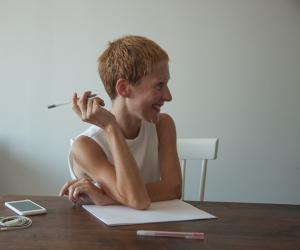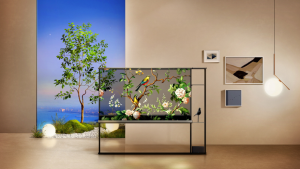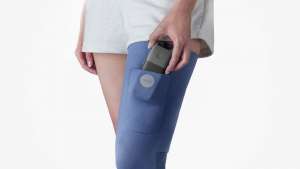Imagine documenting each time you smiled at a stranger, opened the door for a stranger or checked the time because you’re worried you’ll be late? At first glance, these subconscious decisions don’t amount to much. But when quantified and customised over time, these values can give us new insight into our minds and our actions, says data designer Giorgia Lupi.
The first of her “small data” projects, a book called Dear Data, introduced people to the idea that by cutting out computers, we could tap into the nuances of personal data. “Although it does not sound revolutionary, by removing the technology in question we’ve been forced to extend ourselves as designers,” she says in her Design Talk at the Design Indaba Conference 2017.
The ‘we’ Lupi refers to is herself and designer Stefanie Posavec, an American woman living in London. While Lupi was living in New York, she exchanged handmade postcards with Posavec, each detailing their behaviours in a creative, tactile way.
For one year, they unearthed unknown behavioural patterns and used their data to get to know one another and themselves.
Lupi explains that “on the one hand, we’ve each been forced to create 52 – each – visual languages from scratch. Because hand drawing with data really leads you to designs that are incredibly customised for the data in question. But also, removing the computer from the equation triggered us to find different ways to look at data as an excuse to tell something about ourselves.”
“...using data as a lens through which to reveal things like my never-ending anxiety for being late even though I’m absolutely always on time.
They recorded how often they opened doors, how often they looked at the clock, how often they smiled and more importantly, why. They used this information to glean insight into themselves. “I still do smile more and I’m definitely more aware of what I do and what I feel,” she says. “In fact, over one year, the process of actively noticing and counting these types of actions really became a ritual and actually changed ourselves. Both Stefani and I became much more in tune with ourselves and our behaviours and our surroundings.”
Now, Dear Data has opened the realm of data collection to more than just statisticians. It’s been featured in school curricula and has led to more personal projects. “It’s really opened up the world of data to a wider audience and made it more approachable, understandable and more easily relatable to their daily life,” explains Lupi. “This is why I argue that we have to claim a personal approach to how all kinds of data is captured, analysed and displayed.”
In the second part of her Design Talk, we see the tactile value of data come to life when musician Kaki King joins Lupi on stage. The two had embarked on a project that would allow the Design Indaba audience to hear and see data.
“What we are aiming to do together is find a way to use data to deconstruct and reveal the textures of what makes this music that she plays so beautiful,” says Lupi of the project.
For King, visual art has added another element of wonder to her craft. In a text during their period of data collection, King had this to say: “This complete self-awareness. It’s not necessarily a bad thing, it’s just that I’ve never paid this much attention to something my physical body is doing. Not in this way. Not even with my guitar! Experiencing it is truly strange.”
Watch their performance unfold in the video above.









